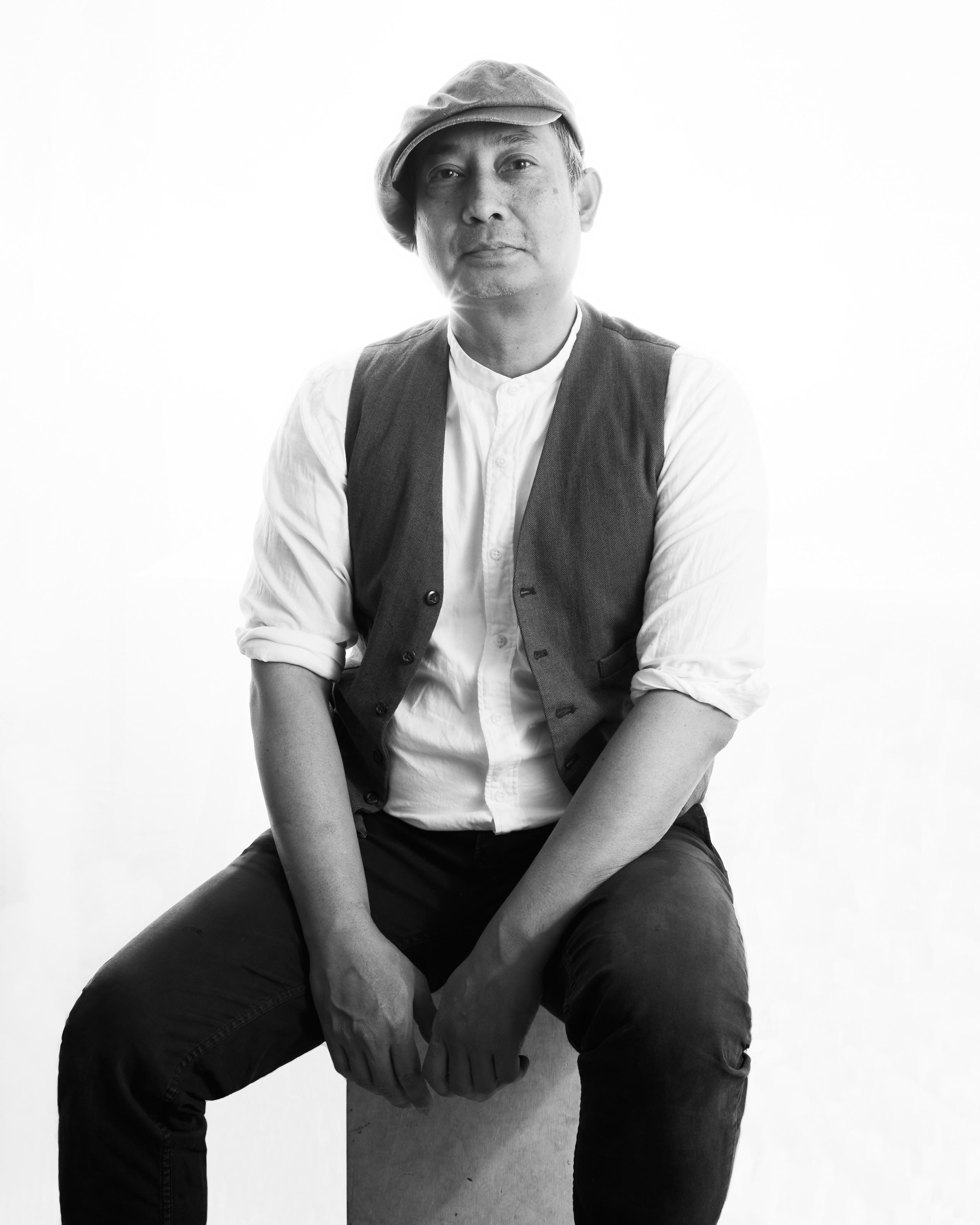
The artist himself, TinTin.
TinTin (Tin Maung Htwe) is a natural artist. He has never set out to define the work he makes. He simply creates, remaining receptive to the varied influences in his life, from the political turmoil of his home country of Burma to his experiences rubbing elbows with the artists of NYC's underground art scene, to becoming a father and relocating to the Southwest. Although he's label-averse — as you will see in this interview — TinTin is a humble Renaissance man capable of synthesizing ideas and materials to create provocative art. This interview between TinTin and our communications director has been snipped from a longer artist interview from 30 November 2024, one day after the opening of the artist's latest exhibition Rodeo Drive, on view until 15 March 2025.
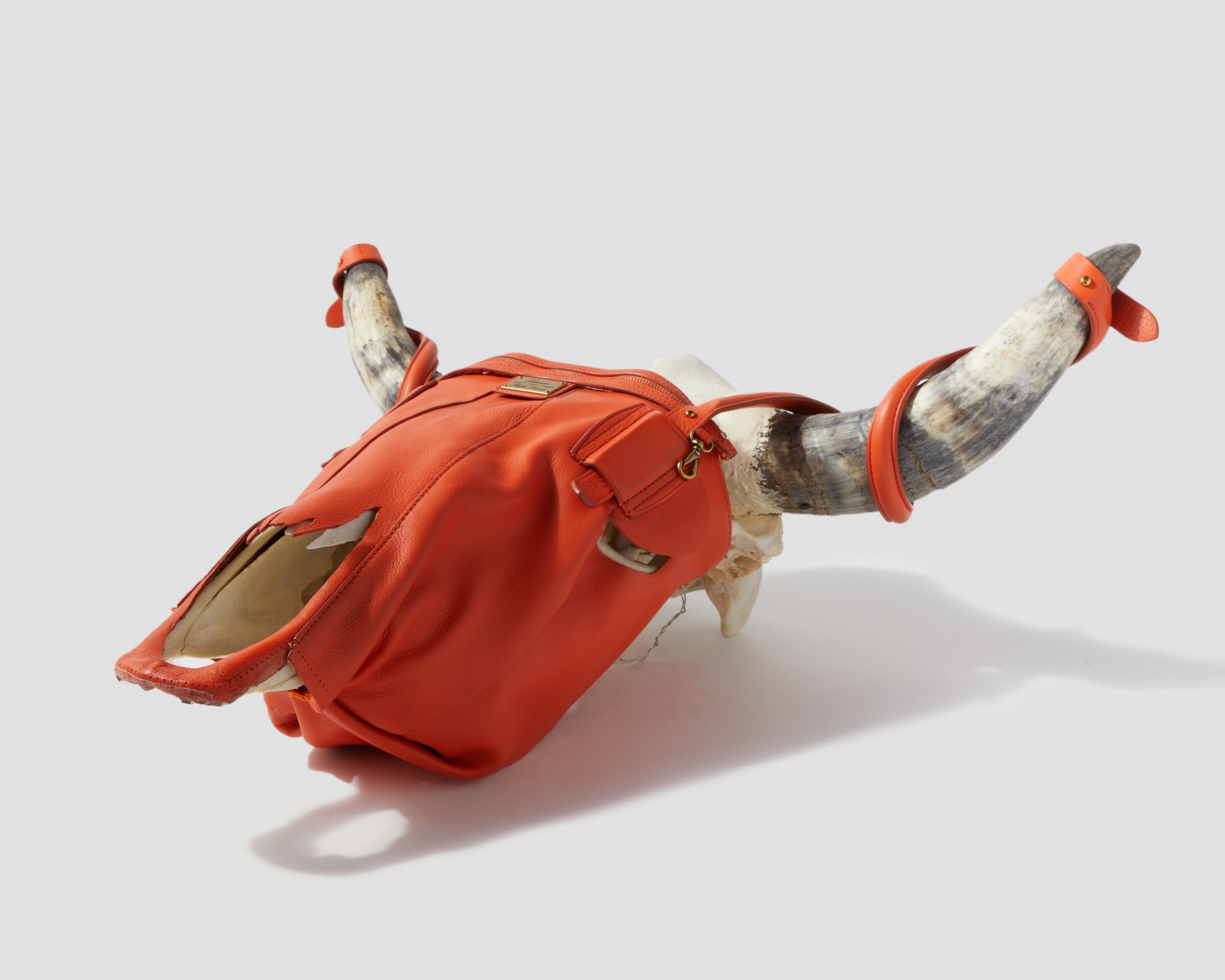
Spencer Linford: Tin, thank you for agreeing to do this interview. To start, could you tell us a little about yourself and the early beginnings of how you became an artist?
Tin Maung Htwe: My story is a little different because I never thought, "I want to be an artist," or anything like that. In Burma, at that time, the art schools were government-run, and you had to pass the entrance exams to be accepted into any given program. I didn't go to those schools, but I was still casually attracted to art. I started drawing in high school, but music was my real interest. I wanted to be a rockstar. I grew out my hair and started playing music. During my early high school years, there was a democratic movement in Burma that led to the schools being shut down. During that time, I was on the street with my friends — For me and my friends, and I think many people from my generation, there wasn't an option to decide what you wanted to be.

SL: What was it like hanging out on the street in Burma during that time?
TMH: There was a lot of chaos. We did all kinds of drugs. My parents started to worry because, you know, I couldn't be controlled. The university kept opening and then closing again. I graduated high school and didn't have a plan for the future. My father was retiring and worried that I wouldn't have a future in Burma, so I wound up coming to America.

SL: What were those early days in New York like?
TMH: In the very beginning, I got work through some distant cousins who were already in the city. I realized very quickly that I needed to go to school and learn English. After I started that process, New York opened my eyes. I began to tap into a larger culture that I had experienced in parts through things like music. A song by Enrique Iglesias comes to mind, the one about Van Gogh. That was the first time I heard about Van Gogh. Looking back now, I can see how important these chance happenings like hearing the Enrique Iglesias song were in leading me down the path of becoming an artist.

SL: Can you tell us how your understanding and relationship to art began changing during these early years in New York?
TMH: In New York, I saw what art really is, how many different genres of art there are, and what kind of art I like. I started hanging around artists, a lot of whom were Japanese kids from my English as a Second Language classes in college. We bonded over learning the language, and they really introduced me to the what's what and who's who of art in New York City.

SL: Eventually your involvement in the New York City art scene led to the birth of your own exhibition space, art@apt. Can you tell us a little bit about that space?
TMH: For about 10 years, give or take, I didn't pay attention to what people were doing or creating in my country. I was so fixated on New York. New York was the center of the art world. But one day I heard that there was a Burmese artist in New York. That piqued my interest. So, a friend of mine organized for us to meet. It was during the Armory Show, which is really just a big party. So, we met up, and talked, and I was surprised by how much she knew about contemporary art. I was very impressed. We had so much in common that we just naturally became friends. [That artist was Chaw Ei Thein, TinTin’s wife, who also has work on display at the gallery].
Chaw encouraged me to turn my ideas into works of art. I have always been and still am a conceptual person, but back then I didn’t think of turning my ideas into objects. It comes back to this thought I kept having of, “I’m not an artist.” But I like being around artists, and I like making things, but the label of artist just never stuck. But there were relatively few Burmese creatives in New York at that time, so naturally Chaw and I became the Burmese artists. Whoever was coming over from Burma, or even other countries, like Thailand, they would stay with us. Politicians, artists, writers, musicians, all kinds of people would stay with us. There was a shared sense of community because our cultures were similar; We had a shared understanding. Our apartment had a revolving door, so little by little, it made sense to turn it into more of a community space. By and by the apartment became more of a gallery, with curatorial ideas manifested in different spaces of the apartment. Like for example, the Red Corner. I started collecting red things and assembling them in this small corner of the apartment. And of course Chaw had work to hang. When friends came over, if they had pieces to show, we would hang them up and invite people to come and see them.
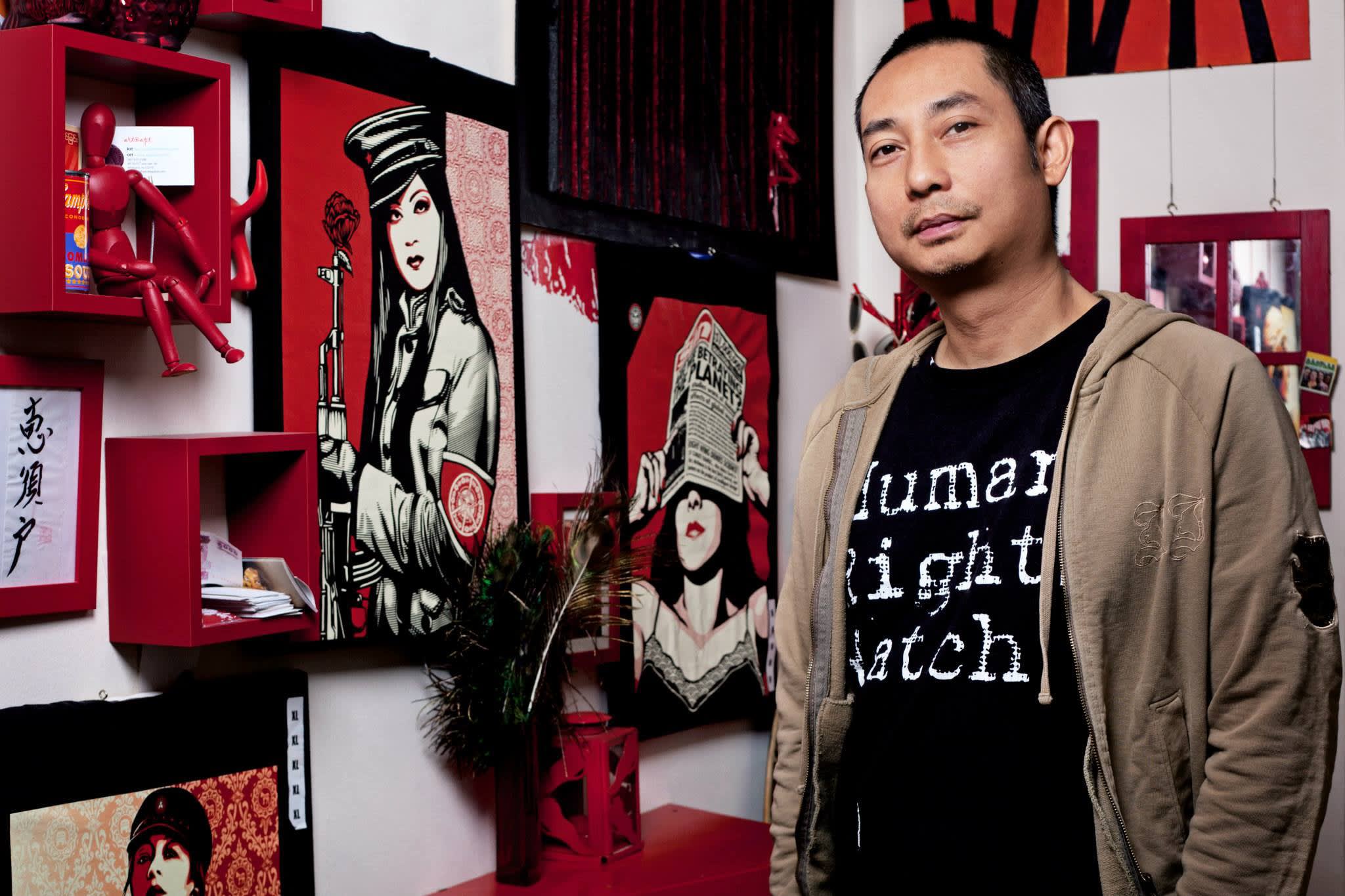
SL: I see, so art@apt was more of a collective or idea space than a traditional commercial gallery.
TMH: Some people, they like a label, gallery, contemporary, abstract, etc. To me, I don’t care. Like maybe the work is contemporary, maybe it’s not. What’s the point? I think what’s important is that the work comes before the classification. For me, when I have an idea, I use whatever material or medium best helps me execute the idea. You can’t push it. You can’t force it. There was a time when I would try to categorize and intellectualize everything. I was so eager to know everything. But eventually, I started to feel greedy, “I wanna know this. I wanna know that. Everything.” Eventually, I realized it is better to just start making.
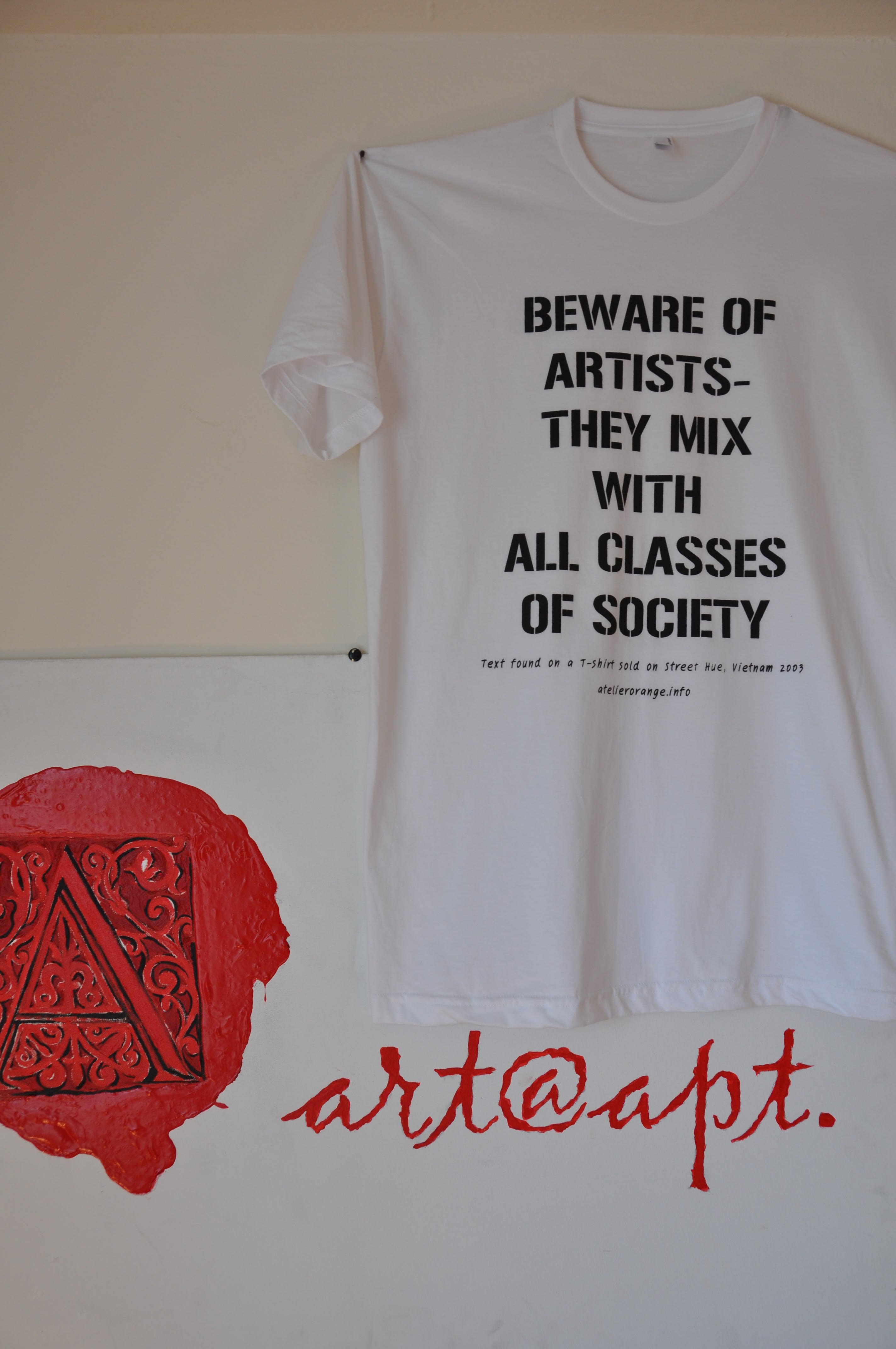
This t-shirt from art@apt sums it up. To be an artist, you have to be in the mix, doing the work...does anyone know where I can get this shirt? Photography courtesy of the artist.
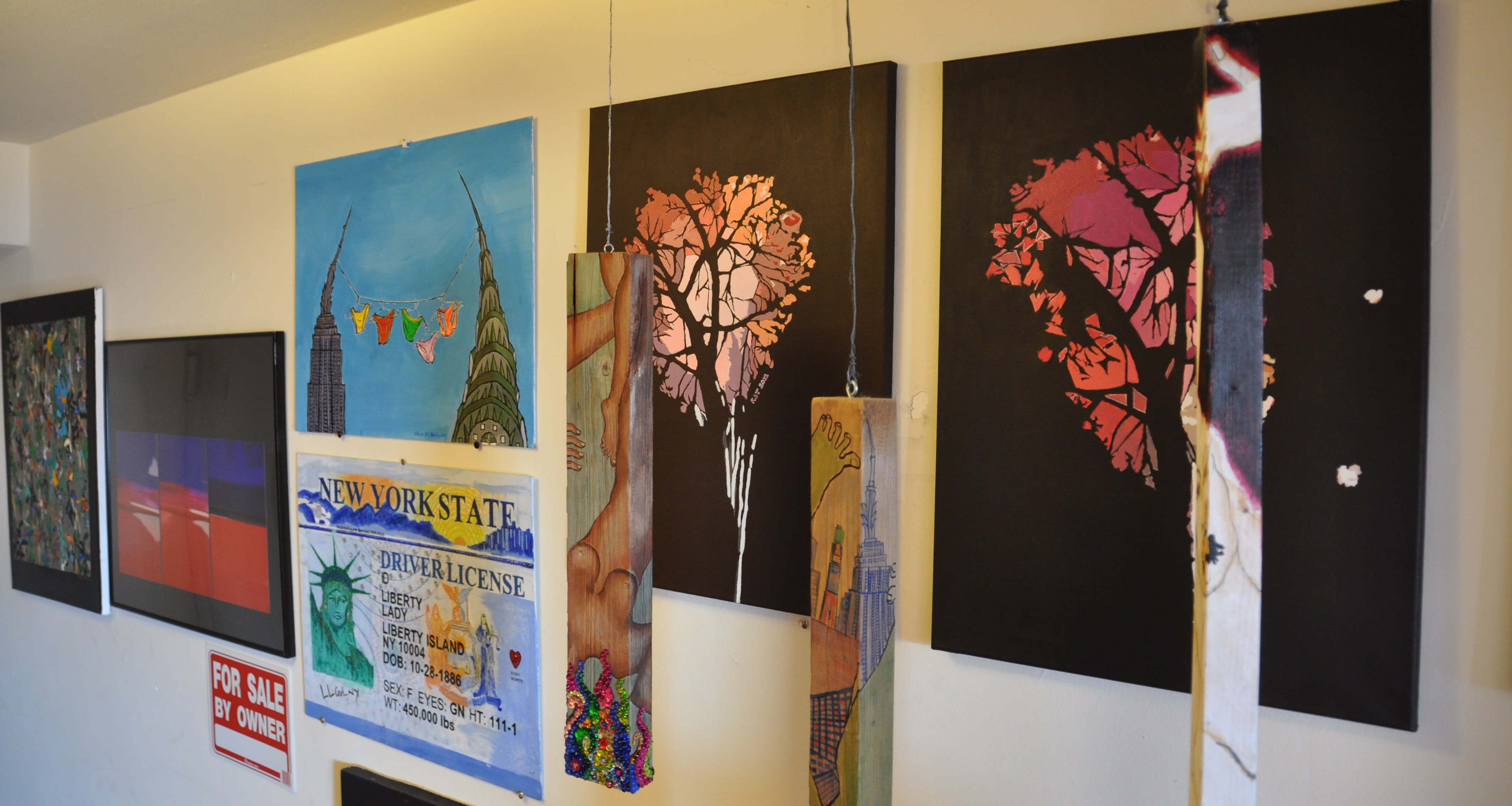
DIY or die; Installation view from art@apt. Photography courtesy of the artist.
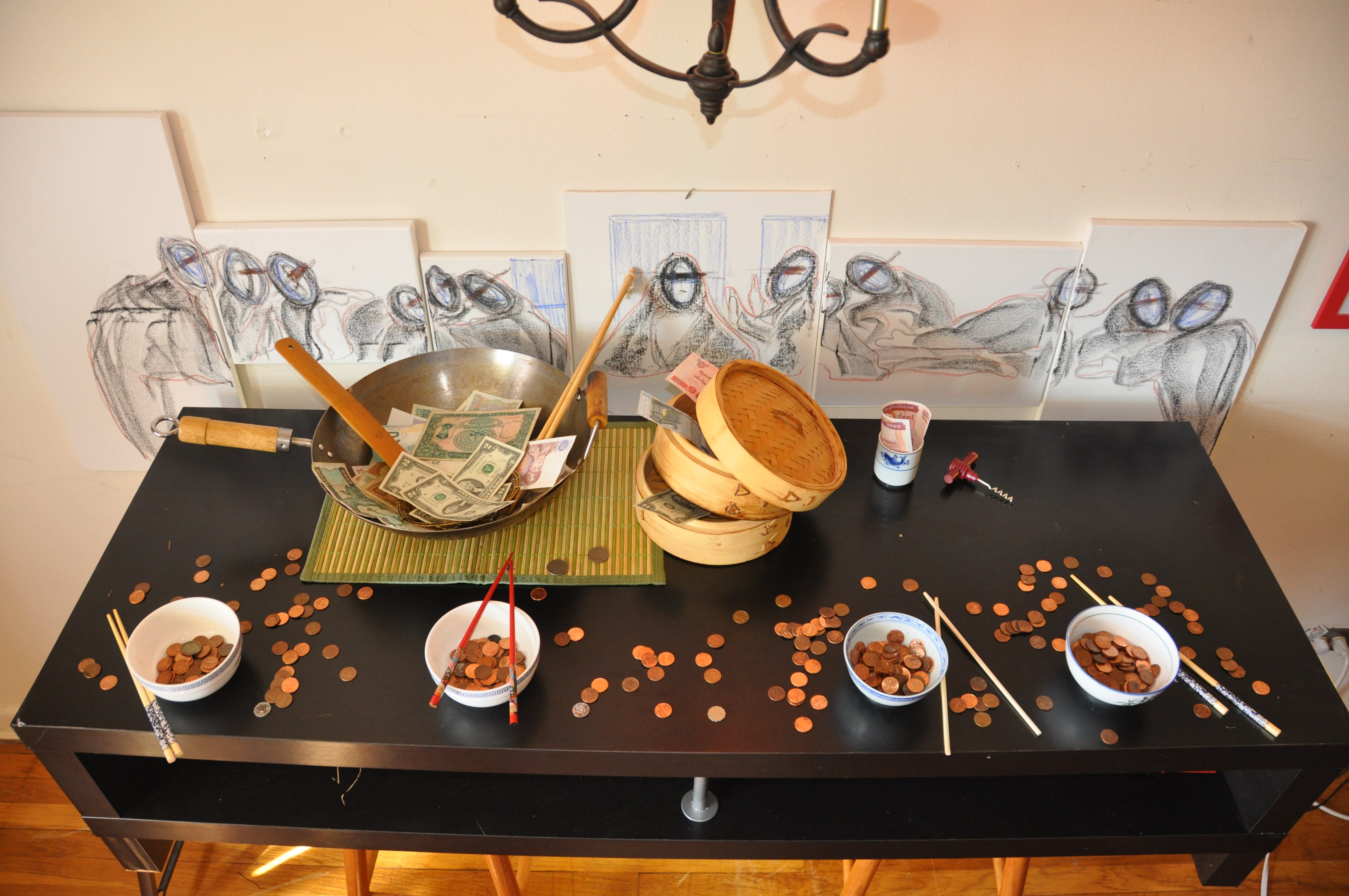
It seems to all come back to consumption — The Last Supper, 2017, TinTin. Mixed Media. From art@apt. Photography courtesy of the Artist.
SL: It sounds like art@apt was going well. But you eventually moved to the Southwest. Why the move from New York?
TMH: Life happened. Chaw was pregnant with our daughter. I was totally freaking out because I didn’t have a plan. I couldn’t focus on my work, so I took a break. My boss at the time gave me a couple weeks off to figure things out, but I still didn’t have a full plan. Having a child is scary. You don’t necessarily know what to do. I think most parents would agree. Our daughter, Mudra, finally came. And we were so happy, but it was also hard financially. It got really tough with the cost of living in New York. I had to find somewhere more affordable for what I wanted to do and what Chaw wanted to do. I put all our stuff in storage and started travelling around the country. I had been outside of New York before, but I had never really seriously considered living anywhere else. I had my eye on the West because I had been to Texas, Arizona, and California, but I had never been to New Mexico. I visited Santa Fe, and back then there were so many galleries — there still are — but back then you couldn’t count them. There were also a lot of tourists. And the art scene was totally different from New York. There was more of a focus on Spanish and Native artists mixed in with Western Americana. Something told me to give it a try. So we moved. Pretty soon after that, I started thinking about maybe opening a small space, something like art@apt, something for Chaw mostly, because of course, I had a young daughter. She was/is the priority, not my artistic career.
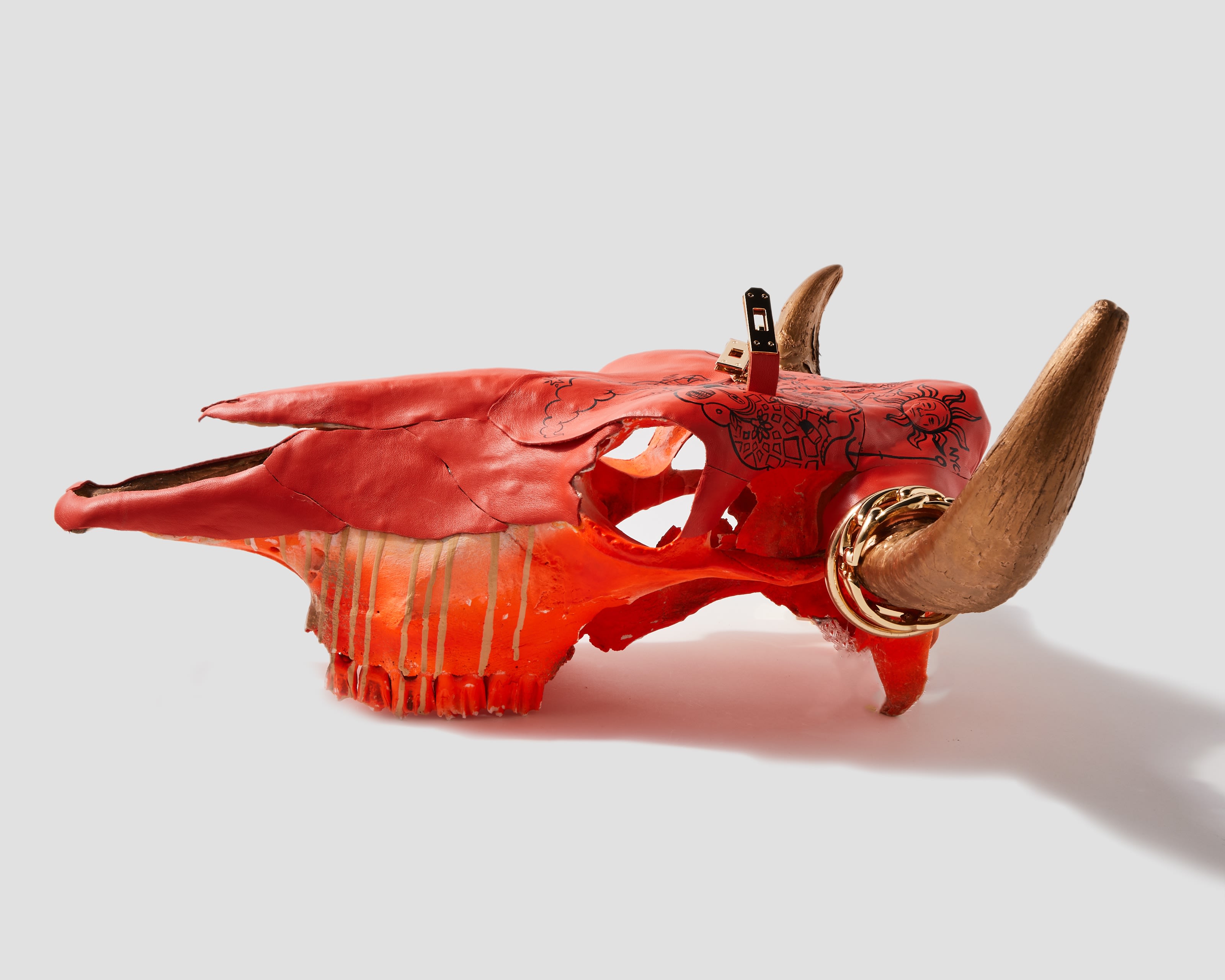
SL: I totally understand. It's hard to do everything. But you did and still manage to juggle it all, including running a gallery space. Can you tell us a little about how your Santa Fe gallery, Studio Mudra, came about?
TMH: Yeah, so, I came back from my trip to Santa Fe, and I was telling Chaw, “The weather is nice, fresh air, there’s an art scene; I think we should try it out.” She agreed, and we moved. Then we found a space in that shopping center off the plaza for around $600/month. I was like, “wow,” this is really great. Where are you going to find a $600 studio space? Forget about New York. It was perfect, she and her father could show their work. We could invite other artists in the community to show their work. The space was in a heavily trafficked area. We knew we wouldn’t make money, but it was worth it because we liked doing it. Unfortunately, the pandemic happened. So like everything else, the gallery had to shut down.
SL: The pandemic dealt a critical blow to the local art market, but I’ve heard many artists describe the solitude of lockdown as a great opportunity to focus on their craft. How was it for you? Did you make a lot of artwork during that time?
TMH: Sort of. The problem is that our apartment is small, so we rent a storage unit and that’s where most everything goes once I make it. Since I moved Santa Fe, my practice has changed somewhat. Now I do things as favors for friends, like painting or posters, illustrations, but I don’t necessarily have the time to regularly put out new works. That’s why the cow skulls are nice. They are an ongoing project that I can return to time and time again. There’s no rush with that project. There’s also a lot of stuff that I want to do that requires power tools, which is not something any landlord wants to hear. For Rodeo Drive specifically, the cow skulls have an element of novelty. Many people have never seen something like that before. There’s a wow factor.

SL: I couldn’t stop looking at them when they came in. They stopped me in my tracks. How did the first piece come together?
TMH: I never saw anyone using cow skulls as decoration when I was in New York, but they are everywhere here. That fascinated me. I was curious where the skulls were coming from, which it turns out, is Mexico — They just fascinated me for some reason. I saw a few others painting on cow skulls or adding turquoise to them, but I wanted to do a little bit more than that. Georgia O’Keeffe popularized the cow skull as a motif in American art, but it wasn’t something she had to go out and buy. She just went out into the landscape and painted it. It was new to her; it caught her attention. The same thing sort of happened to me. I thought, why not introduce leather back to the cow skull? What would that do?
Back in New York, I lived pretty close to a Kate Spade store. I really liked her design sensibility. It just looked very good. So, that kind of led me down the path of creating the cowskull handbags. After the Kate Spade one, I thought, why not do another? And then that same thought kept repeating itself. And now here we are.
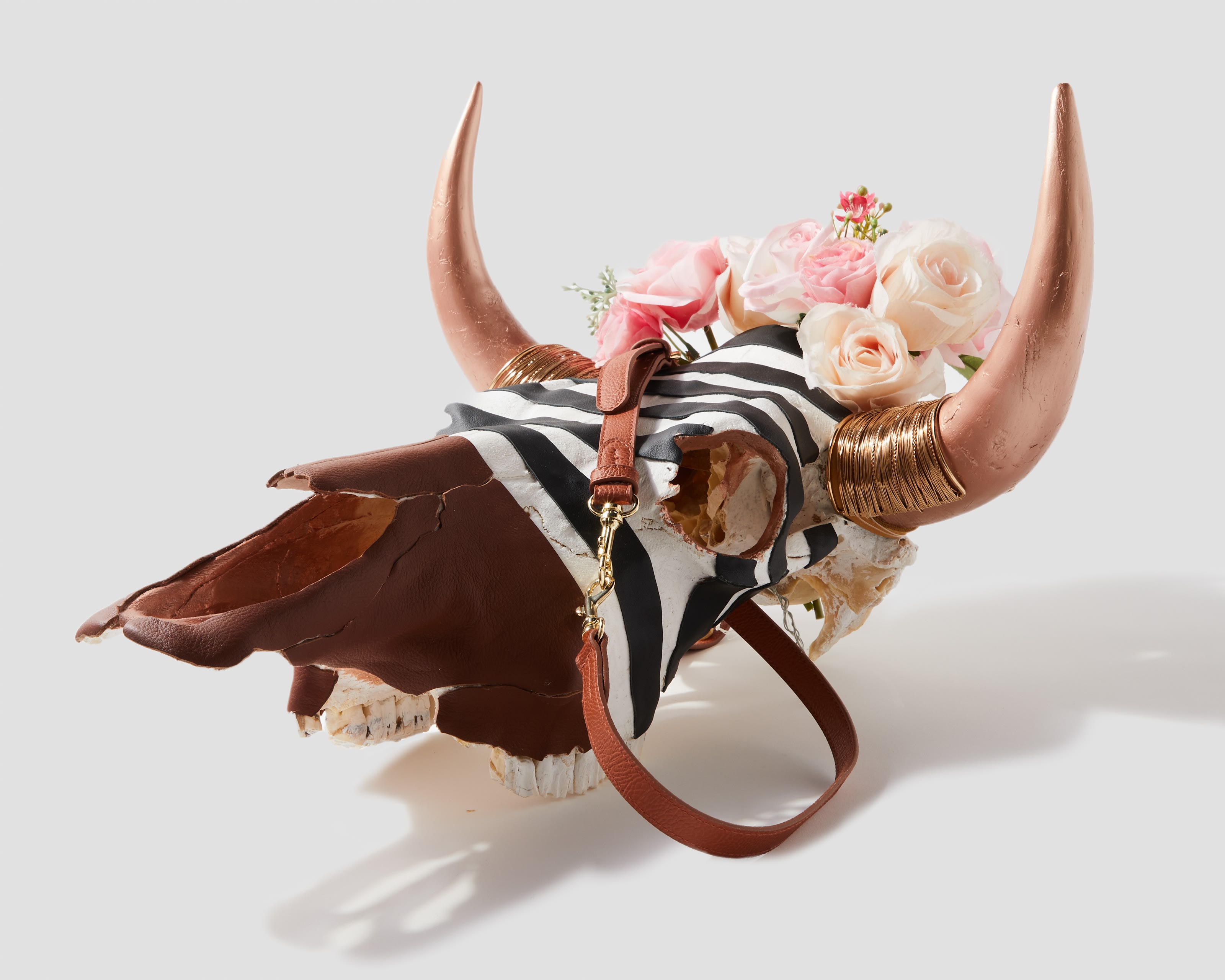
The piece that started it all — Kate Spade Floral, 2018, TinTin. Cow skull, leather, acrylic, metal chain. 20 x 18 x 13 in.
